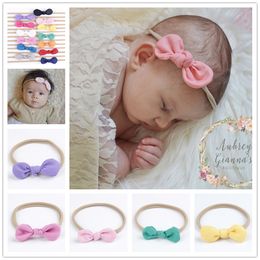Is your teen begging for permission to get her cartilage pierced? Maybe she is citing that all of her friends have one of these piercings. Or, maybe she wants to use the piercing as a form of self-expression. If you are hesitant to let your teen pierce any part of her body other than her earlobes, you are not alone in your concern.
You may be worried about how a cartilage piercing will affect her employment or education opportunities. Or you may be concerned about the risk of infection. These are definitely valid concerns. In recent history, piercings were frowned upon by the majority of adults, and methods used to pierce body parts other than earlobes were questionable, but various types of piercings outside of earlobes have been a part of cultural practices dating back to Ancient Egypt.
Changing Attitudes
These days, however, tattoos and piercings are becoming more and more popular, and cultural significance is being acknowledged. As recently as ten years ago, body modifications were viewed much more negatively than they are now. A greater number of young people are getting tattoos and piercings, and modifications are gaining acceptance as a form of self-expression. Reputable piercing studios are common, using sterile, safe, disposable tools.
Regardless of the wider acceptance of piercings like those in the upper-ear, and the improvement of sterile piercing practices, there is cause for concern when considering whether or not to let your teen get a cartilage piercing.
The American Academy of Pediatrics advises that instead of just saying “no” without further discussion, you should talk to your teen about why they want this piercing and assess the risks together. When deciding whether or not to give your teen permission to get a cartilage piercing, there are some key factors to keep in mind, which we will outline here.
Employment Opportunities
Piercings are more accepted than they used to be, though there is still a fair amount of bias against non-traditional body art. As a matter of fact, 55% of respondents to a 2017 survey indicated that visible piercings are always inappropriate at work.
Though some types of piercings may be more frowned-upon than others, a cartilage piercing is still a non-traditional piercing. So, if your teen gets one of these types of piercings, she may run the risk of being passed over for a job she would otherwise be completely qualified for.
Physical Complications
With a cartilage piercing, your teen runs the risk for physical complications on multiple levels. Unsterile piercing methods could transmit dangerous infections, certain types of metals can cause allergic reactions, and bacteria can make its way into the piercing site, causing abscesses. Some of these risks are more common than others, but they are all important to take into consideration when ensuring your teen is getting a safe piercing.
Because the blood supply to cartilage is not particularly abundant, cartilage does not heal well from injury or infection. Sometimes infection and/or injury can cause serious deformity of the outer ear, or require partial amputation.
Sterile Tools
Different states have different levels of oversight and regulation regarding piercing studios. But it is essential when having any sort of piercing done that the practitioner uses safe methods for piercing. Find out which methods are safest for the particular piercing your teen wants here, and accompany her to ensure those practices are being employed. If non-sterile tools are used, there is a risk of transmission of hepatitis C, HIV, and other serious infections. You may want to check with your pediatrician because some offer piercing right in the office. This way, you can be assured that practices are safe and sterile.
Alternatives to Cartilage Piercing
When discussing the matter of a cartilage piercing with your teen, it is important to be thorough and examine her alternatives. You also may want to make an appointment with her pediatrician to discuss safety and proper care if you decide to go ahead with the piercing.
It is reasonable to suggest a waiting period before actually getting the cartilage piercing. Sometimes the desire for a piercing can be impulsive, or merely because it is the trend of the season. A waiting period can help your teen figure out if the piercing is really what she wants, or if the desire was just a whim.
You could also take this time to order her an earring subscription box in which she will receive a monthly gift box for earrings that is sure to delight her and possibly help her get out of the fashion boredom that may have sparked her want for a cartilage piercing in the first place.
Something else your teen can try during this waiting period is an ear cuff. This is an accessory that looks like a cartilage ring but does not require a piercing. This way, she can try out the look and decide if it is really worth the risk and effort of aftercare.
Final Thoughts
It is important to take your teen’s desire for body piercing seriously, and discuss it thoroughly with her. When you are making your decision, take risks, safety, and alternatives into consideration. Know that there are alternatives like ear cuffs and monthly earring gift box subscriptions that can help her decide if a piercing is really what she wants.
After she sees the variety that can come monthly in a beautiful gift box for earrings, she may completely forget about her desire for a cartilage piercing. An earring gift box subscription may help her to appreciate exciting new accessories, at least long enough to help her make an informed decision about her body.
Regardless of the ultimate decision, taking her request seriously, researching together, and offering alternatives like a monthly subscription to an earring gift box or an ear cuff, will help the two of you bond in a way that celebrates a milestone in itself. She is on her way to becoming an adult by making informed, mature decisions.

Leave a Reply